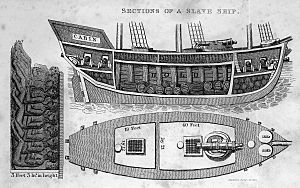Robert Walsh (Irish writer) facts for kids
Robert Walsh (born 1772, died 1852) was an interesting Irish person. He was a clergyman, meaning he worked for the church. But he was also a historian, a writer, and even a doctor! He lived a very busy life and traveled a lot.
Contents
Robert Walsh's Early Life
Robert Walsh was born in 1772 in Waterford, Ireland. Many of his family members had been important leaders there. He started studying at Trinity College Dublin in 1789. While there, he became friends with famous people like Robert Emmet and Thomas Moore. He was a very good student and graduated in 1796.
Becoming a Clergyman
After college, Robert Walsh became a clergyman in the Church of Ireland. From 1806 to 1820, he worked at St. Canice's Church in Finglas, near Dublin. He married Anne Bayly there, and their son, John Edward, was born in Finglas.
In 1815, Robert Walsh helped write a book called History of the City of Dublin. He worked on it with John Warburton and James Whitelaw.
Travels and Important Work
Robert Walsh became a chaplain, which is like a religious advisor, for the British Embassy. He worked in St. Petersburg (Russia) and then in Constantinople (now Istanbul, Turkey) starting in 1820.
Fighting Against Slavery
In 1828, he became a chaplain at the British Embassy in Rio de Janeiro, Brazil. He spent about 200 days traveling through Brazil. He wanted to learn about the lives of enslaved people there. He wrote a book called Notices of Brazil in 1828 and 1829. This book was part of a big effort to stop the slave trade.
Walsh strongly believed that the slave trade was wrong. He suggested setting up special courts wherever there was a British consul. These courts would have the power to arrest and try people involved in the slave trade, even if they weren't carrying enslaved people at that moment. He hoped this would stop the trade completely. He wanted "every slaver on any part of it will be seized and tried as a pirate." Even with his efforts, the foreign slave trade in Brazil didn't end until 1850. It took another 30 years for all enslaved people to be freed.
A Difficult Journey Home
Robert Walsh left Brazil on May 4, 1829. After two weeks at sea, the captain of his ship saw a slave ship. They chased it for 30 hours, even firing shots to make it stop. When Walsh boarded the slave ship, he saw firsthand the terrible conditions. Enslaved people were transported in very crowded and unhealthy spaces. His ship finally arrived in Portsmouth, England, on June 30.
Return to Ireland and Later Life
Robert Walsh also earned a medical degree and worked as a doctor for some time. He returned to Ireland in 1835. He worked in churches in County Wicklow and then moved back to Finglas in 1839. He passed away there in 1852.
Discovering Ancient History
Walsh's family had a long-standing interest in archaeology, which is the study of old things. Robert Walsh was no different. He helped find a famous old cross called the Cross of Nethercross in Finglas. People in the village had a story that the cross was buried in a certain spot. It was hidden to protect it from soldiers during the time of Oliver Cromwell. Robert Walsh had people dig at the spot, and they found the cross! It was then put up in the Finglas churchyard.
Family Connections
Robert Walsh's son, John Edward Walsh, became a very important lawyer in Ireland. He also wrote a popular book called Ireland Sixty Years Ago in 1847. Much of the information in this book came from articles his father, Robert, had written.
Robert's brother, Edmond, was also a writer and a successful army surgeon. Robert's grandson, also named Robert Walsh, became a historian too. He wrote about the history of churches in North Dublin.



